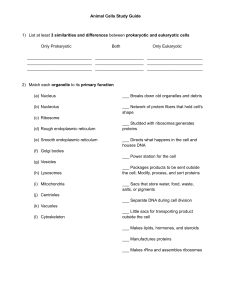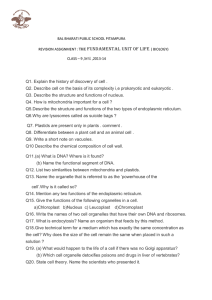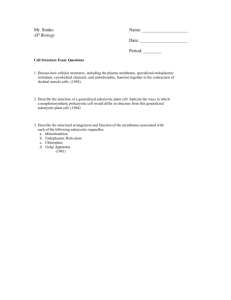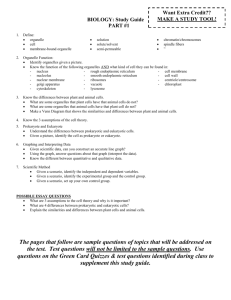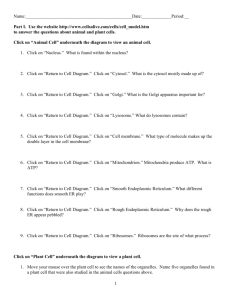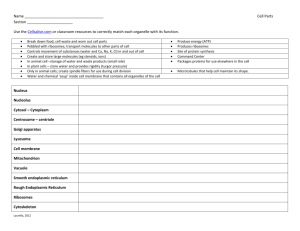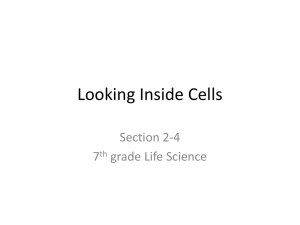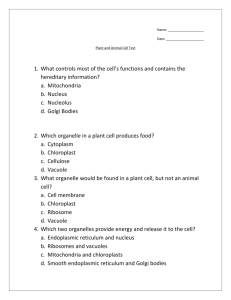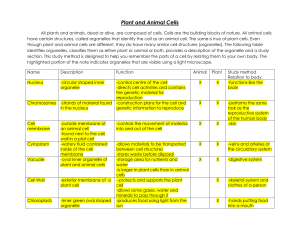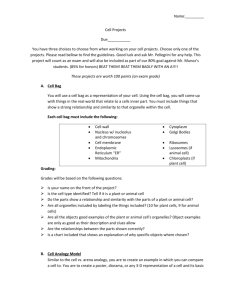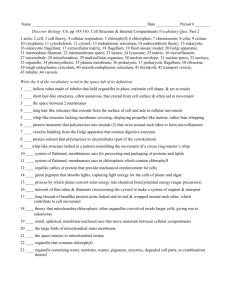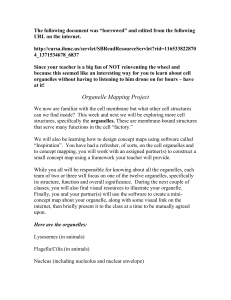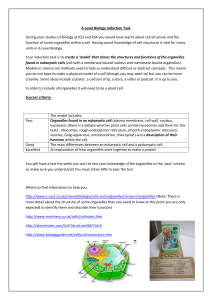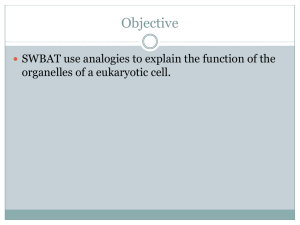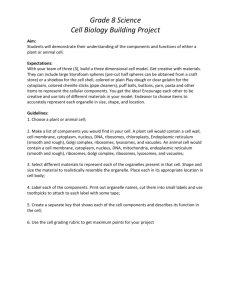Supplemental File S6. Cell Engineer-Examples of cell structure and
advertisement
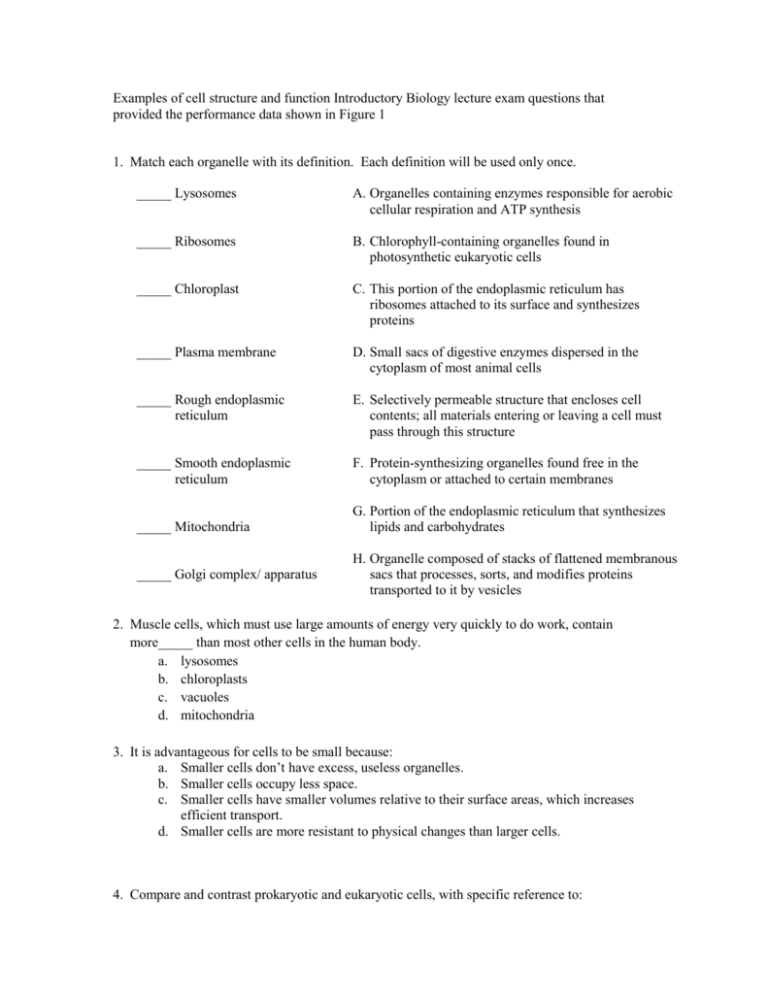
Examples of cell structure and function Introductory Biology lecture exam questions that provided the performance data shown in Figure 1 1. Match each organelle with its definition. Each definition will be used only once. _____ Lysosomes A. Organelles containing enzymes responsible for aerobic cellular respiration and ATP synthesis _____ Ribosomes B. Chlorophyll-containing organelles found in photosynthetic eukaryotic cells _____ Chloroplast C. This portion of the endoplasmic reticulum has ribosomes attached to its surface and synthesizes proteins _____ Plasma membrane D. Small sacs of digestive enzymes dispersed in the cytoplasm of most animal cells _____ Rough endoplasmic reticulum E. Selectively permeable structure that encloses cell contents; all materials entering or leaving a cell must pass through this structure _____ Smooth endoplasmic reticulum F. Protein-synthesizing organelles found free in the cytoplasm or attached to certain membranes _____ Mitochondria G. Portion of the endoplasmic reticulum that synthesizes lipids and carbohydrates _____ Golgi complex/ apparatus H. Organelle composed of stacks of flattened membranous sacs that processes, sorts, and modifies proteins transported to it by vesicles 2. Muscle cells, which must use large amounts of energy very quickly to do work, contain more_____ than most other cells in the human body. a. lysosomes b. chloroplasts c. vacuoles d. mitochondria 3. It is advantageous for cells to be small because: a. Smaller cells don’t have excess, useless organelles. b. Smaller cells occupy less space. c. Smaller cells have smaller volumes relative to their surface areas, which increases efficient transport. d. Smaller cells are more resistant to physical changes than larger cells. 4. Compare and contrast prokaryotic and eukaryotic cells, with specific reference to: a. Size b. Location of DNA c. Presence of internal membrane-bound organelles d. Ribosome characteristics 5. Describe the structure and function of the endomembrane system in eukaryotic cells. Which cellular components comprise this system?


